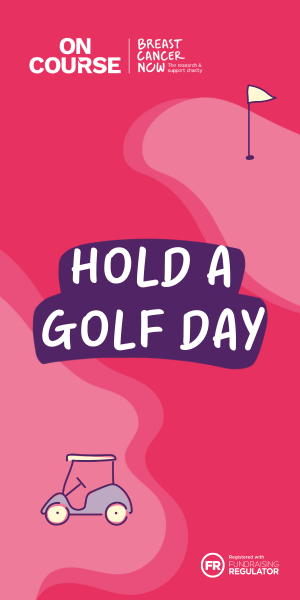Unpopular opinion: We need to stop focusing on promoting participation and start worrying about keeping low handicap golfers in the game.
A few weeks ago I wrote an article exploring the gap I think exists when it comes to information and support for low handicap female golfers. And from the responses I’ve received following the article, it seems I’m not alone in my thinking.
In an industry-wide effort to attract new women and girls to the game, it’s obvious there’s a whole demographic of golfer who feel completely ignored.
And whilst it seems the problem has only been made worse since the introduction of the World Handicap System (more on that another time) what I think it really boils down to is this one-size-fits-all expectation of why women want to play.
We can't drive participation with beginners alone
As an industry, we focus all our efforts on promoting participation and inclusivity. We encourage women to get into golf because it’s social. Because it’s good for your physical and mental health. Because anyone can play – young or old.
But what about the women who want to play for the buzz of competing? Because there should be a place for them too.
What about the ones who want to improve quicker than borrowing clubs in their weekly group session will enable them to?
And what about the low handicap women who are already in the game?
It’s becoming more evident that there is very little support for those women. And the more I think about it, the more I realise how detrimental it is for the game.
Yes, one of the best things about golf is that literally anyone can play it. And you can do so to whatever level you please.
But we can’t grow the game purely with beginners or golfers who only play socially. We need elite golfers for the game to thrive. People to act as ambassadors and role models and make sure women’s golf is taken seriously.
And if we continue to neglect those golfers, there’s a distinct possibility they’ll leave the game. Anecdotally, we know there’s growing frustration amongst low handicap club golfers, and more and more are choosing not to play in club competitions. And I worry it’s only a matter of time before they decide to pull away from golf altogether.
Jess's journey to breaking par
Looking into the whole topic a bit more, I stumbled upon Jess Ratcliffe’s profile on Instagram. After taking up golf during lockdown, Jess cut her handicap from 34 to 9 in just 12 months. Now on her journey to breaking par, she writes a regular blog about her approach to the game and challenging the “expected” path and pace of improvement.
And it got me thinking: There are enough of us who feel this way, so why don’t we start supporting each other? It’s a start at least.
So with Jess’ permission, here’s one of her blog posts I think you’ll find invaluable if you’re on your own journey to improving your game: Three habits that helped me become a single figure golfer in a year.
Here’s a quick summary of the blog:
Habit #1: Be ruthlessly positive
When you dare to go after a goal – something that stretches and scares you – there is one thing that doesn’t serve you: doubt.
Don’t get me wrong, that voice of doubt – “What if this doesn’t work?”, “What if I look like a fool?” – will be with you all the time but this is where you have to practice being ruthlessly positive.
When a score doesn’t go as you hoped, pull out the positive. When a shot doesn’t go as you hoped, believe you can save it. You can either take something from the round or it will take from you.
In the pursuit of a big goal, there’s no purpose in doubting yourself and there’s no downside to backing yourself. Life is too short not to.
Habit #2: Practice like the golfer you want to be
One thing that confused me as a beginner golfer, was the comments I would get when I went up to practice:“Up here again?” “You’re practicing too much!”
There were times when I would feel guilty practicing and embarrassed if a comment was made. It almost felt like practicing was something you shouldn’t do – but as someone wanting to actively improve, that made no sense to me.
That’s where this habit helped me the most.
By practicing like the golfer I wanted to be, and not the golfer I “was” (whether that’s based on handicap or years into the game), I had a sense of purpose that pulled me into action, even when I didn’t feel motivated.
Habit #3: Trust it’s coming
On my rollercoaster ride to single figures, I’ve learned that golf is a game of many things (patience, frustration, resilience, joy…to name a few) but most of all, I believe it’s a game of trust.
When it feels like you’re putting in the work but it’s not showing up on the course, you have to trust it’s coming.
You have to believe that the goal you’re going after is possible and the practice you’re putting in will get you there.
You have to trust that the scores you’re seeking are so close, you could reach out and grab them.
And in the moments when you fear it might never happen, that’s when you have to trust it’s coming the most.
What do you think? Let me know your thoughts by emailing [email protected].














